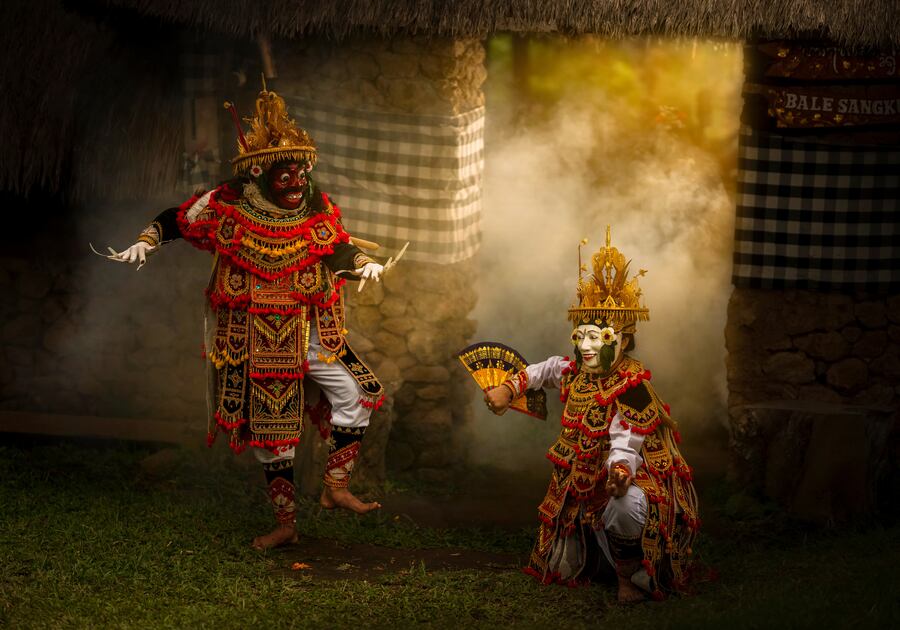Cultural Heritage: A Bridge Between Tourism and Education
Cultural heritage is like a bridge that connects the past to the present, telling the stories of who we are and where we’ve come from. It’s not just about preserving old buildings or artefacts; it’s about keeping alive the traditions, values, and wisdom that have shaped communities for generations. When we use cultural heritage as a centre for education, it’s more than just a classroom lesson—it’s a hands-on experience that lets people connect with their roots and understand the world in a deeper, more meaningful way.
And let’s not forget tourism, which plays a huge role in how we share these treasures with the world. People travel to explore new places, but they often leave with more than just souvenirs. They take with them the stories, the art, and the customs that make each place unique.
Indonesia is a country bursting with history and culture, from the ancient temples of Java to the lively rituals of Balinese dance. With its rich traditions and incredible heritage, it’s no wonder that Indonesia’s cultural legacy is becoming a key part of both education and tourism. This heritage doesn’t just attract tourists from all around the world; it also offers valuable opportunities for education, helping future generations better understand their history and roots.

In Indonesia, cultural heritage is increasingly recognized as an important educational resource. Schools and universities across the country are using their rich culture to teach students about their past. And it’s not just about reading from textbooks – it’s about bringing that history to life. Many regions have integrated cultural heritage into their curricula, where students learn about traditional crafts like batik, wood carving, and wayang puppets. These handmade crafts aren’t just art; they carry the stories of generations through time. By studying them in school, young people gain a deeper understanding of how their ancestors lived and what values were important to them.
Additionally, schools often take students to historical sites as part of their learning experience. Take the Borobudur temple, for example. It’s not only an iconic tourist attraction, but also a living museum for students. It offers them a chance to learn about Buddhist philosophies and the artistic achievements of ancient Indonesians. In this way, cultural heritage isn’t just preserved—it’s actively used to teach and inspire the next generation.
In addition to its role in education, Indonesia’s cultural heritage is also a major driver of tourism. For many visitors, experiencing cultural sites and traditions is a huge part of their travel journey. Whether it’s marvelling at the temples in Yogyakarta, witnessing the rituals in Bali, or admiring the intricate wood carvings in Ubud, these places draw millions of tourists every year. Tourism doesn’t just bring in economic benefits—it also provides a unique opportunity to showcase and share this heritage with the world.

What’s even more exciting is how local communities are directly involved in tourism. Local guides, artisans, and performers get the chance to share their expertise and craftsmanship with visitors. This not only creates jobs but also helps keep traditional crafts alive and relevant in today’s world. The result is that cultural heritage is not only preserved but also continues to thrive in the modern age.
While there are many benefits to using cultural heritage for education and tourism, there are challenges too. One of the biggest issues is the threat of neglect caused by over tourism. Popular destinations like Bali and Yogyakarta see huge crowds every year, and this can lead to damage to historical buildings, temples, and other vital cultural sites. Without proper protection and regulation, these places could lose their charm and significance.
Another concern is cultural exploitation. It’s important to remember that the traditions and crafts we admire need to be treated with respect and preserved for future generations. Tourism should support local culture, not exploit it. This means tourists need to be mindful of local customs, and local communities should be fairly compensated for their contributions to the cultural experience.
But there are also plenty of opportunities. The educational use of cultural heritage allows young people to connect with the history of their country, instilling pride in their culture. On top of that, innovative tourism models, like eco-tourism and cultural tourism, can help protect heritage by generating income for the preservation of historical sites. It’s all about finding that balance between celebrating tradition and ensuring its sustainability.
Indonesia stands at a crossroads when it comes to preserving its cultural heritage. The key to a sustainable future lies in balancing education, tourism, and cultural preservation. By incorporating cultural heritage into education, younger generations can learn just how crucial it is to protect their history. At the same time, tourism brings not only economic opportunities but also a chance to share this rich heritage with the world and connect with other cultures.
Preserving Indonesia’s heritage isn’t just about saving old temples or artworks; it’s about fostering a deeper understanding of the country’s culture and history. If done right, we can not only protect the beautiful traditions of Indonesia but also keep them alive for generations to come. It’s all about making sure the past continues to inspire the future.
Cultural heritage serves as a bridge that connects past traditions to present experiences, making it an essential part of both education and tourism. In Indonesia, this heritage is not only an important educational tool but also a major driver of tourism. Students learn about their history through hands-on experiences with traditional crafts, historical sites, and cultural practices. Meanwhile, tourism brings economic benefits and helps share Indonesia’s rich culture with the world, involving local communities in the process. However, challenges such as over tourism and cultural exploitation must be addressed to preserve these traditions for future generations while ensuring sustainable growth.

